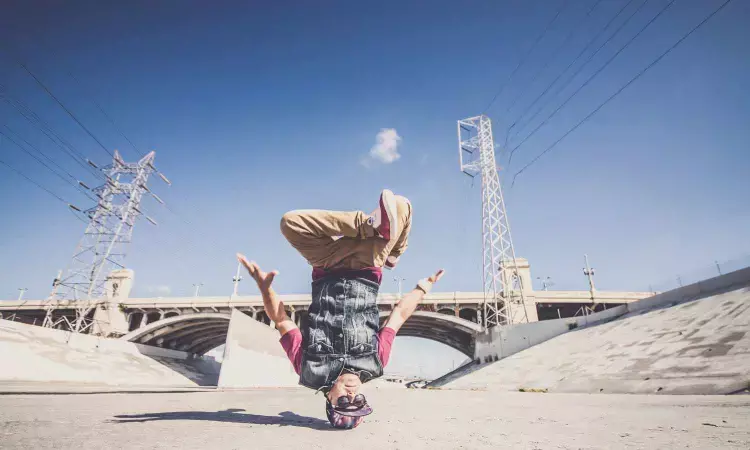- Home
- Medical news & Guidelines
- Anesthesiology
- Cardiology and CTVS
- Critical Care
- Dentistry
- Dermatology
- Diabetes and Endocrinology
- ENT
- Gastroenterology
- Medicine
- Nephrology
- Neurology
- Obstretics-Gynaecology
- Oncology
- Ophthalmology
- Orthopaedics
- Pediatrics-Neonatology
- Psychiatry
- Pulmonology
- Radiology
- Surgery
- Urology
- Laboratory Medicine
- Diet
- Nursing
- Paramedical
- Physiotherapy
- Health news
- Fact Check
- Bone Health Fact Check
- Brain Health Fact Check
- Cancer Related Fact Check
- Child Care Fact Check
- Dental and oral health fact check
- Diabetes and metabolic health fact check
- Diet and Nutrition Fact Check
- Eye and ENT Care Fact Check
- Fitness fact check
- Gut health fact check
- Heart health fact check
- Kidney health fact check
- Medical education fact check
- Men's health fact check
- Respiratory fact check
- Skin and hair care fact check
- Vaccine and Immunization fact check
- Women's health fact check
- AYUSH
- State News
- Andaman and Nicobar Islands
- Andhra Pradesh
- Arunachal Pradesh
- Assam
- Bihar
- Chandigarh
- Chattisgarh
- Dadra and Nagar Haveli
- Daman and Diu
- Delhi
- Goa
- Gujarat
- Haryana
- Himachal Pradesh
- Jammu & Kashmir
- Jharkhand
- Karnataka
- Kerala
- Ladakh
- Lakshadweep
- Madhya Pradesh
- Maharashtra
- Manipur
- Meghalaya
- Mizoram
- Nagaland
- Odisha
- Puducherry
- Punjab
- Rajasthan
- Sikkim
- Tamil Nadu
- Telangana
- Tripura
- Uttar Pradesh
- Uttrakhand
- West Bengal
- Medical Education
- Industry
Breakdancers may risk 'headspin hole' caused by repetitive headspins, doctors warn

Breakdancers may be at risk of developing a condition caused by repeatedly doing a cardinal move of their practice and performance-the headspin-warn doctors in the journal BMJ Case Reports.
Dubbed the ‘headspin hole,’ or ‘breakdance bulge,’ the condition is unique to breakdancers, and appears as a protruding lump on the scalp, often accompanied by hair loss and tenderness.
Breakdancers are particularly prone to injuries because of the complexities and physical demands of the moves, note the authors. Sprains, strains, and tendinitis are particularly common. Head and brain injuries, including subdural haematomas (pooling of blood between the skull and the brain), have also been reported.
Prolonged breakdancing often leads to ‘breakdancer overuse syndrome’ which includes various conditions, such as carpal tunnel syndrome and swollen and inflamed tendons (tenosynovitis) as well as hair loss and scalp irritation, add the authors.
They treated a man in his early 30s with a growth on his scalp. The man said that he had performed various types of headspin manoeuvres for more than19 years.
He practised his moves 5 times a week for around 1.5 hours a time. During these sessions direct pressure was applied to the top of his head for between 2 and 7 minutes.
Despite hair loss and a burgeoning lump on his head, he continued to practise headspins, but was prompted to act when the lump started to grow a lot larger and his scalp began to feel tender.
A head scan revealed thickening of the skin, tissue, and skull around the lump, but no obvious signs of cancer, which was confirmed on biopsy.
The lump was removed, but the surrounding skin tissue remained thickened. Nevertheless, the man was happy with the result and felt able to go out in public once again without having to wear a cap.
This report represents just one case, and details of only one other have been published to date, so the findings should be interpreted in this context.
But the authors conclude: “This case underscores the importance of recognising chronic scalp conditions in breakdancers and suggests that surgical intervention can be an effective treatment.”
Reference:
Skotting MB, Søndergaard CB‘Headspin hole’: an overuse injury among breakdancersBMJ Case Reports CP 2024;17:e261854.
Dr Kamal Kant Kohli-MBBS, DTCD- a chest specialist with more than 30 years of practice and a flair for writing clinical articles, Dr Kamal Kant Kohli joined Medical Dialogues as a Chief Editor of Medical News. Besides writing articles, as an editor, he proofreads and verifies all the medical content published on Medical Dialogues including those coming from journals, studies,medical conferences,guidelines etc. Email: drkohli@medicaldialogues.in. Contact no. 011-43720751


